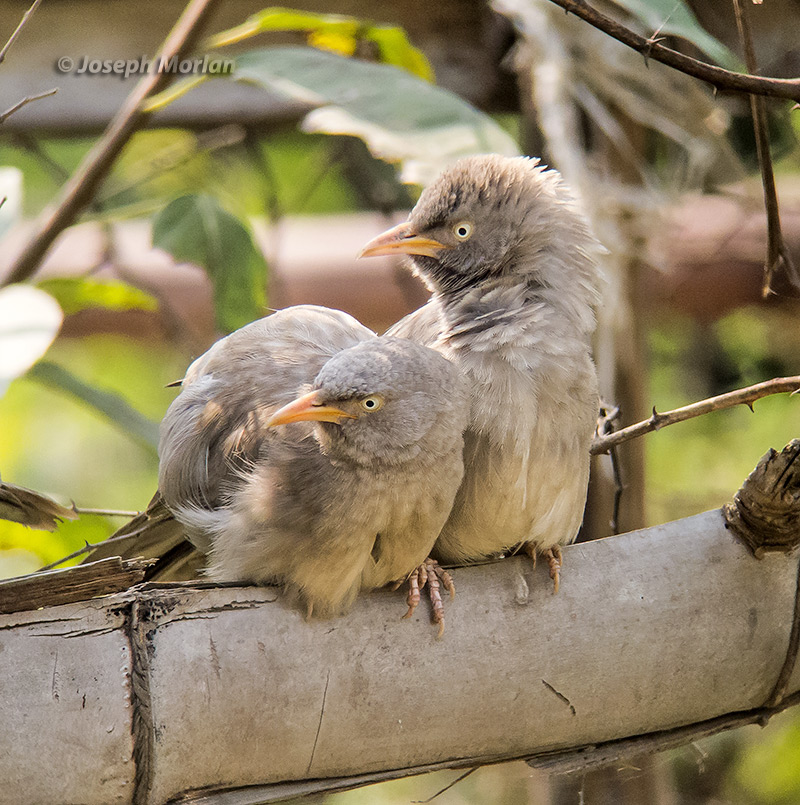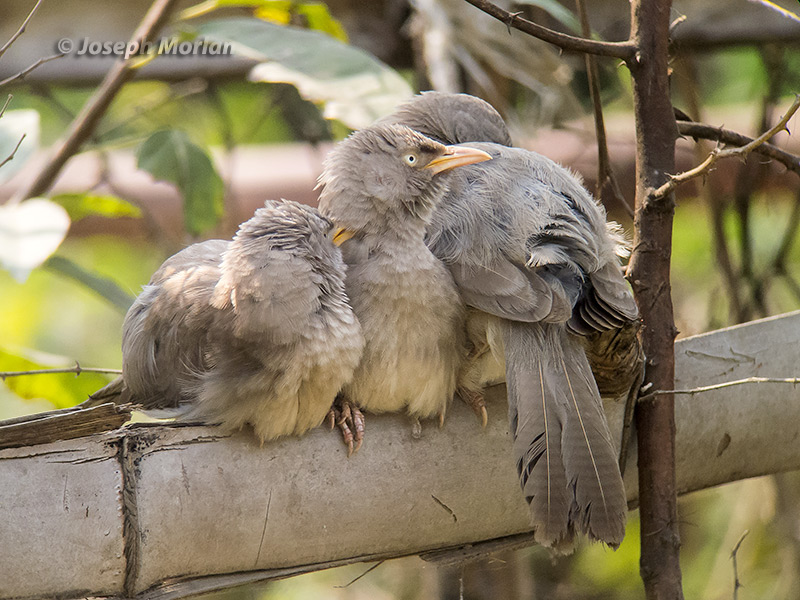

This highly social resident is endemic to the Indian subcontinent where small groups sometimes called the "seven sisters" are frequently seen. However a 2014 study by Gupta found the average size of these groups to be closer to five. I was intrigued by this particular group in which individuals were clumped together preening each other, a behavior known as "allopreening." Gaston (1978) was able to show that the amount of active allopreening was directly related to status within the group and that the behavior was most often seen in high status older birds and breeders. Passive receivers of allopreening were usually lower status, younger birds. Breeding success is aided by "helpers at the nest" in which older siblings from previous nesting participate in feeding the babies.
Formerly classified with other Old World Babblers in the Timaliidae, this species is now included in the Laughingthrush family, Leiothrichidae. These birds are of the paler, grayer, less streaked NW race T. s. sindiana sometimes called "Sind Jungle Babbler." Four or five darker, more rufous subspecies occur to the south and east. Digiscoped with Panasonic DMC-LX5 | Nikon FieldScope III | 30XWA | hand-held (no adapter).
References:
Ali, S & SD Ripley (1987). Compact Handbook of the Birds of India and Pakistan. Edition 2. Oxford University Press.
Gaston, AJ (1977). Social behaviour within groups of jungle babblers Turdoides striatus. Animal Behaviour 25:828–848
Gaston, AJ (1978) Demography of the Jungle Babbler, Turdoides striatus. J Animal Ecology 47: 845–870.
Gupta, N (2014) Group size in Jungle Babblers: revisiting the 'seven sisters' theory. International Journal of Innovative Science, Engineering & Technology 1:2348 – 7968.
Rasmussen, PC & Anderton, JC (2005) Birds of South Asia. The Ripley Guide. Vols. 1 and 2. Smithsonian Institution & Lynx Edicions, Washington, D.C. & Barcelona.